Seconded By: Lars Boering,
This project began after completing my National Youth Service in Nigeria. Due to unforeseen circumstance, I found myself without a place to stay. Looking for shelter, I ended up spending several days and nights at Olusosun landfill, the largest dumpsite in Africa. There, I met waste miners — individuals who survive by reclaiming and selling materials from the dump. The condition of survival, yet their determination and humanity deeply moved me. What I saw at Olusosun, gave me a sense of responsibility: to tell their stories and challenge the ways we see them.
I like to explain why I called the protagonists of this ongoing body of work the ‘Guardians of Gaia’. In Greek mythology, Gaia is the personification of the Earth. I chose this name to highlight the environmental role these individuals play. While often dismissed or labeled as ‘scavengers’, they are in fact critical to waste recovery and recycling — fighting climate change in the most direct, overlooked way. They reduce landfill buildup, salvage reusable materials, and keep our overconsumption in check, often at great personal risk.
Olusosun receives over 10,000 tons of waste daily, including hazardous e-waste from around the world. Hundreds live and work inside the landfill with minimal access to healthcare, clean water, or safety. My photography aims to spotlight their resilience and humanity, and to reframe how society perceives them — not as invisible labourers, but as essential environmental stewards.
This work is far from over. I feel a deep calling to continue documenting their lives and advocating for dignity, recognition, and change. Photography is not just my creative practice — it’s my way of asking the world to see what it too often chooses to ignore.

Unsung Hero, 2025
Saidu Ibrahim is representing the unsung heroes searching for plastics and other recyclable items. Waste miners are often ignored by society, but they play a crucial role in environmental sustainability. Through my photography, I aim to shift public perception – so they are no longer seen as worthless, but rather as essential contributors to our planet’s wellbeing.
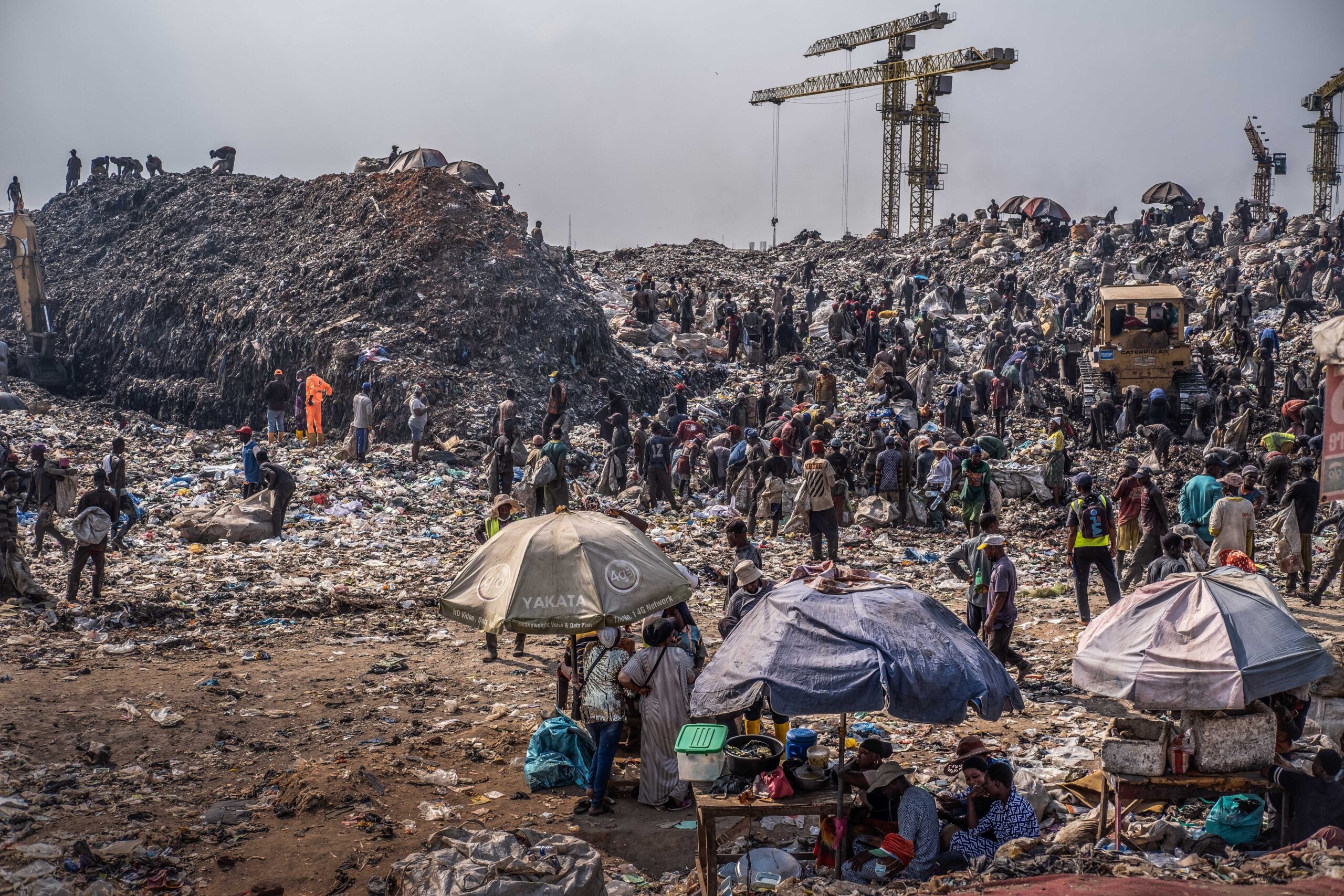
Largest Landfill in Africa, 2024
Olusosun dumpsite spans over 40 hectares in Lagos, Nigeria. The site receives 10,000 tons of waste every day. This includes not only domestic refuse but also international waste, particularly electronic waste offloaded from container ships. Much of this e-waste is treated with hazardous chemicals to extract reusable components, releasing toxic fumes that pollute the air and pose serious health risks.
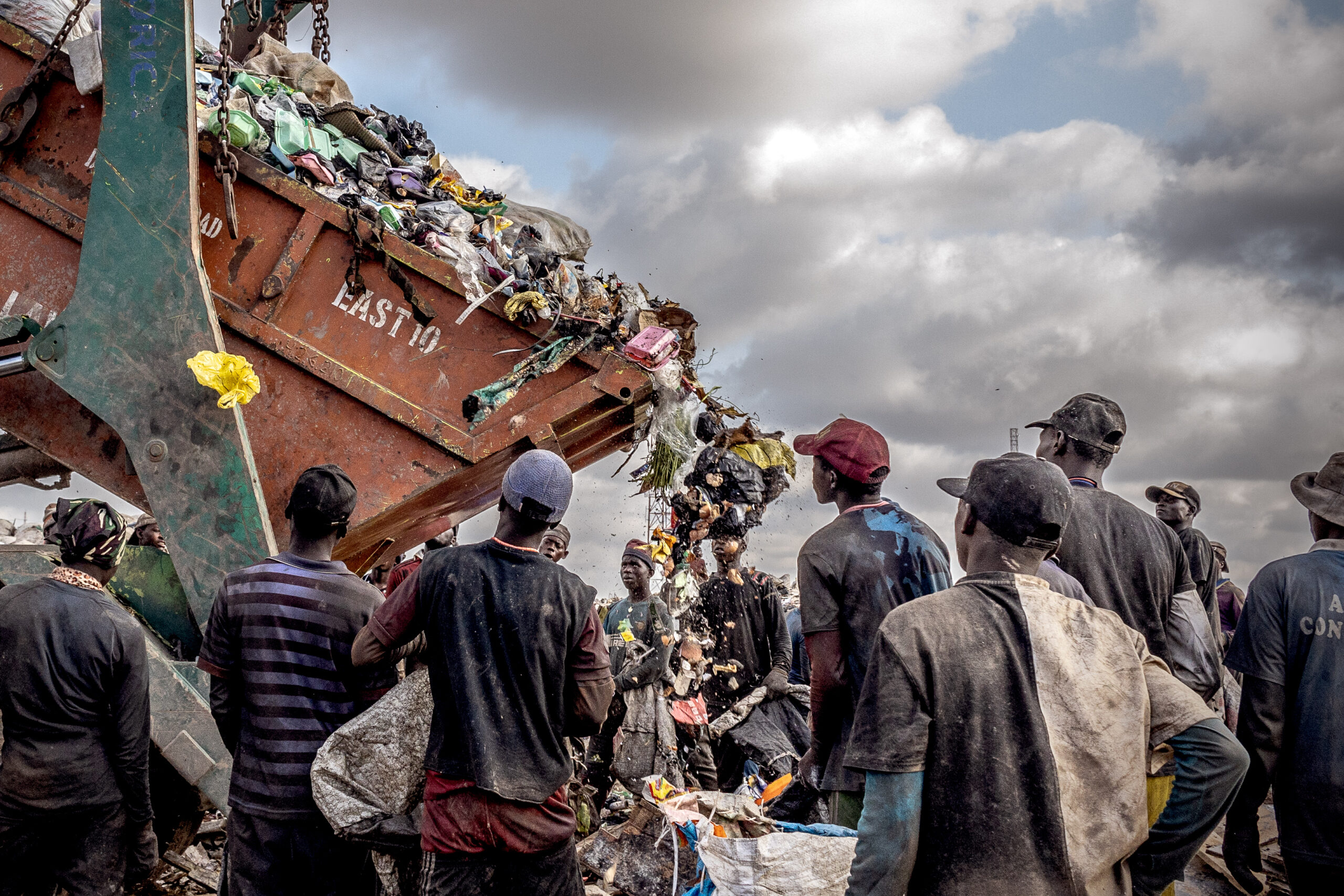
Making a Living, 2023
Waste Miners are looking for useful items to resell to recycling companies.
In 2020, an estimated 81 million tons of plastic waste were mismanaged, with projections suggesting that number could surge to 119 million tons annually by 2040. Olusosun is both a local crisis and a symbol of a global issue. By documenting life within it, I hope to shed light on the intersection of poverty, environmental injustice, and resilience.
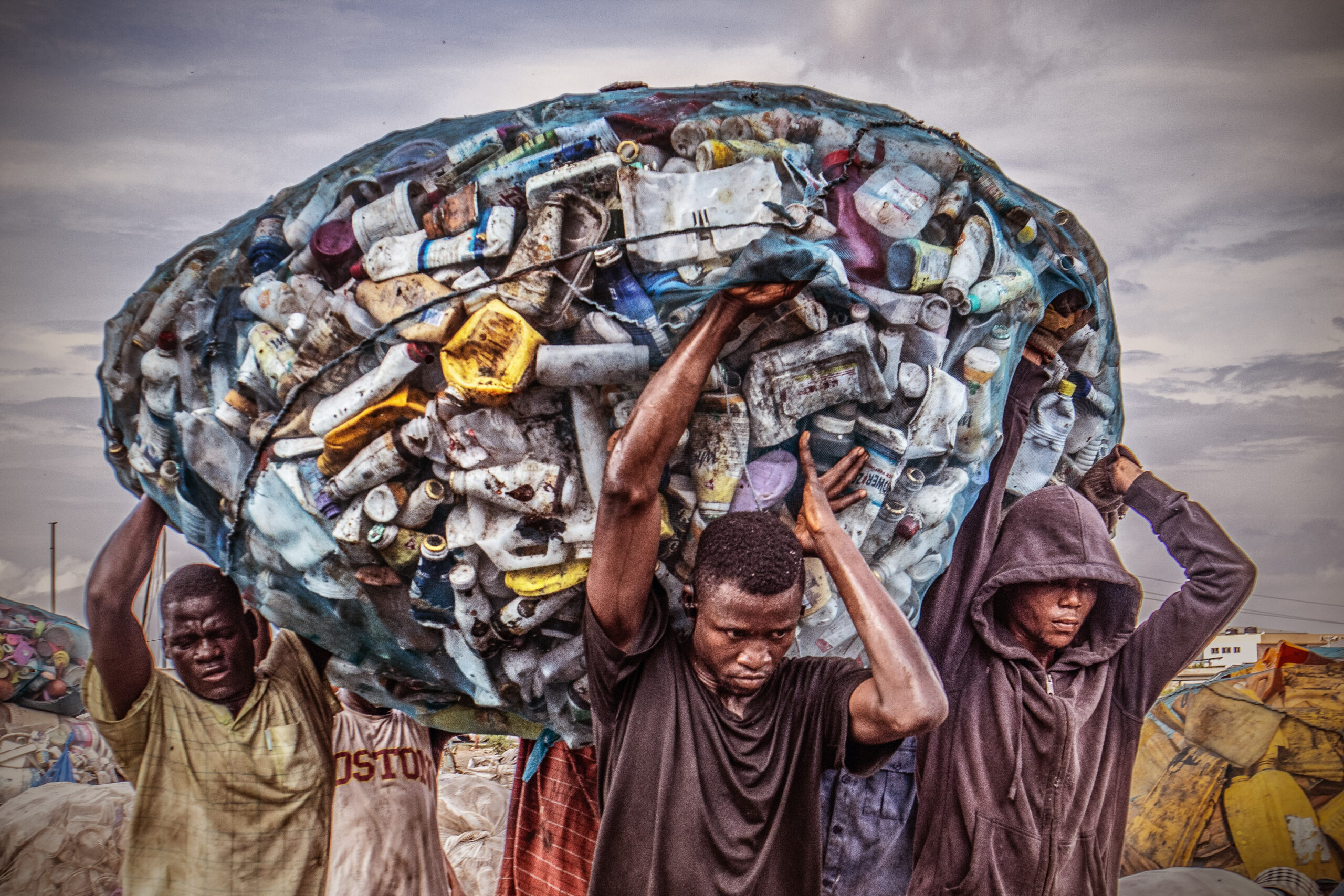
Crucial Work, 2024
Waste miners are working relentlessly to recover the waste we discard without a second thought – waste that not only pollutes our communities, but also contributes to serious environmental and health crises. Improperly managed waste releases harmful gases that accelerate global warming. Amid this growing crisis, waste miners quietly play a crucial role.

Finding Clothes, 2023
Aminu Kaso, a young man who migrated from the northern part of Nigeria to work at the landfill is pleased with what he found. He is sorting and drying his new clothes. Unfortunately, society tends to label these workers with degrading terms like ‘scavengers’, reinforcing negative stereotypes. I’ve chosen to call them waste miners instead, because I believe changing perceptions begins with changing language.

A Job to be Proud, 2023
Waste miners are often overlooked and heavily stigmatised, but in my view they are the frontline soldiers in our fight against climate change. Just as we honour doctors, engineers, or environmental scientists, we must begin to respect waste miners for the critical work they do.

Personal Hygiene, 2024
Ato is preparing his hair to go out for the evening. Living among waste demands an extraordinary level of resilience. I remember spending nights there myself. The experience left a lasting impression. The air was thick with the stench of decay, nearly unbearable at times. I cannot begin to think how hard it must be to keep up personal hygiene every day.

Made-shift Chemist, 2023
Mr Mubarak collecting a penicillin injection. The workers are exposed to toxic fumes, sharp metals, broken glass, and e-waste laced with dangerous chemicals. These physical risks are compounded by poor access to healthcare, clean water, and sanitation. Many suffer from respiratory issues, skin infections, and other health complications.
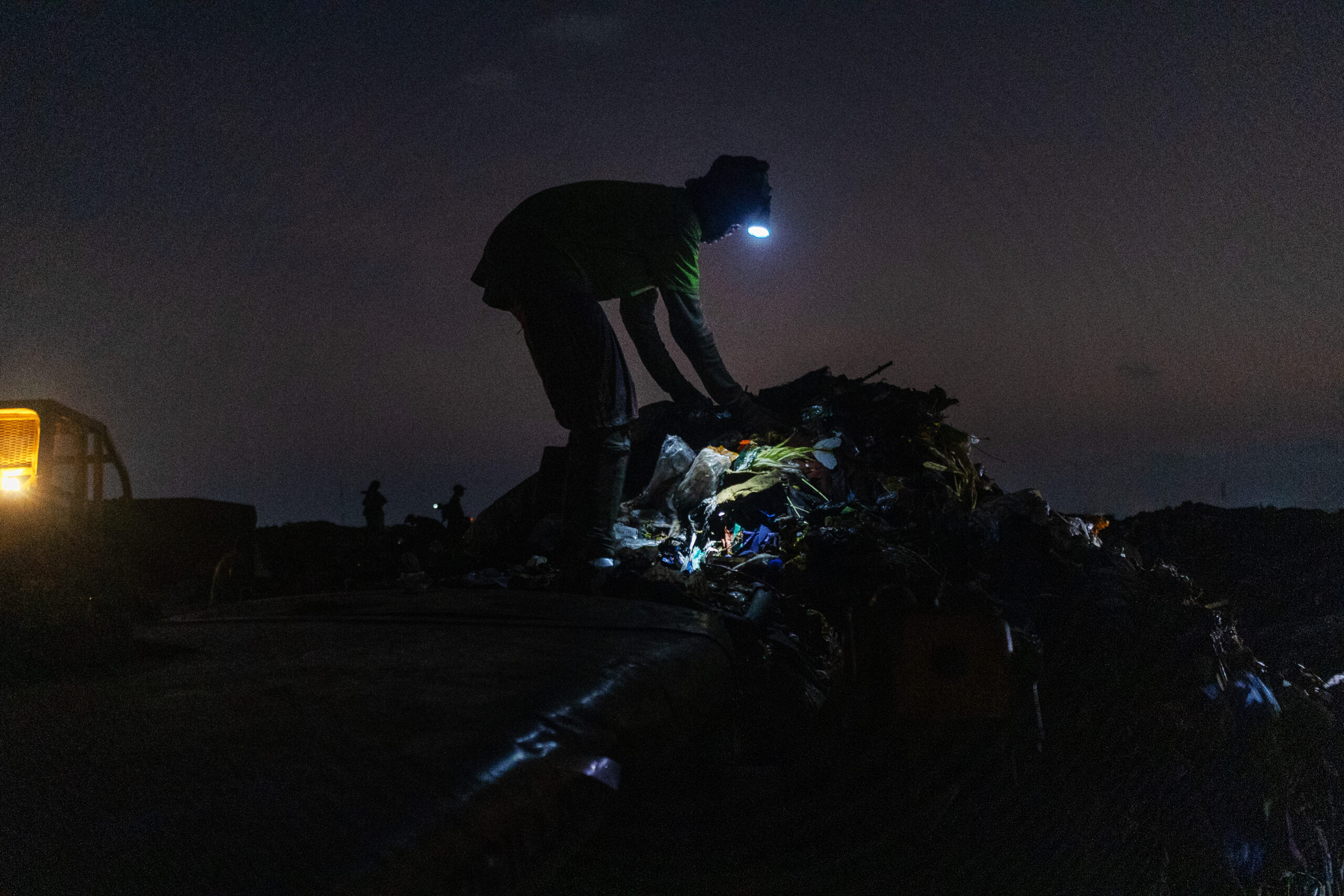
Avoiding Burning Sunlight, 2023
Abudu Abubakar is searching for waste that can be recycled at night time, due to the extreme heat during the day. Beyond the physical toll, there’s the psychological burden of living in an environment where you’re surrounded by society’s discarded excess. It’s a painful reflection of our culture of overconsumption, and how the poorest are left to bear its consequences.
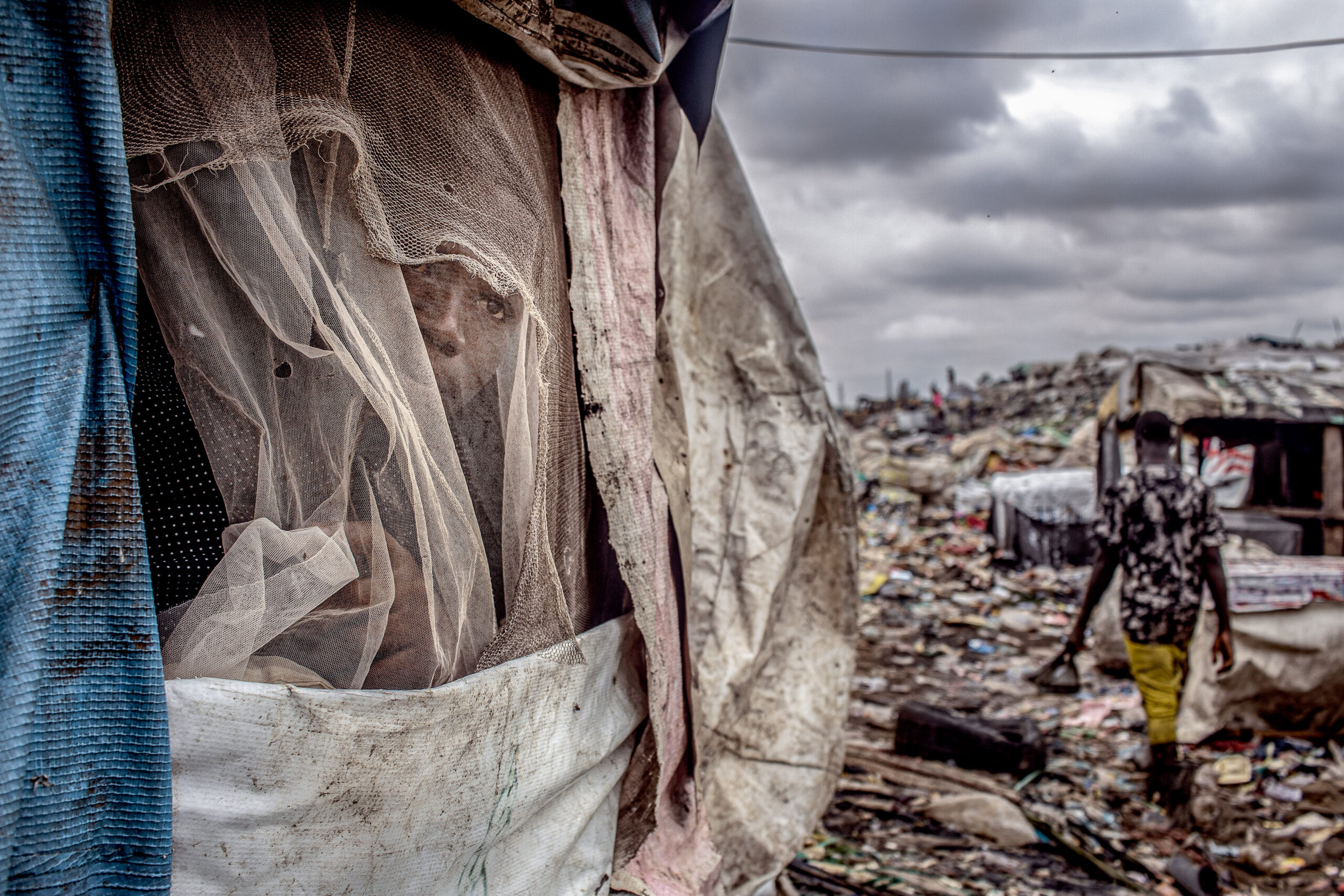
Home, 2023
Isma’il is resting in his Bunka (the name given to their homes). Roughly 500 makeshift homes exist within the landfill, forming a shanty town inhabited by people who live and work on the site. These residents scavenge for metal, plastic, electronics, anything they can sell to survive. Despite their critical role in waste recovery and recycling, they live in extremely vulnerable conditions with little access to basic services.